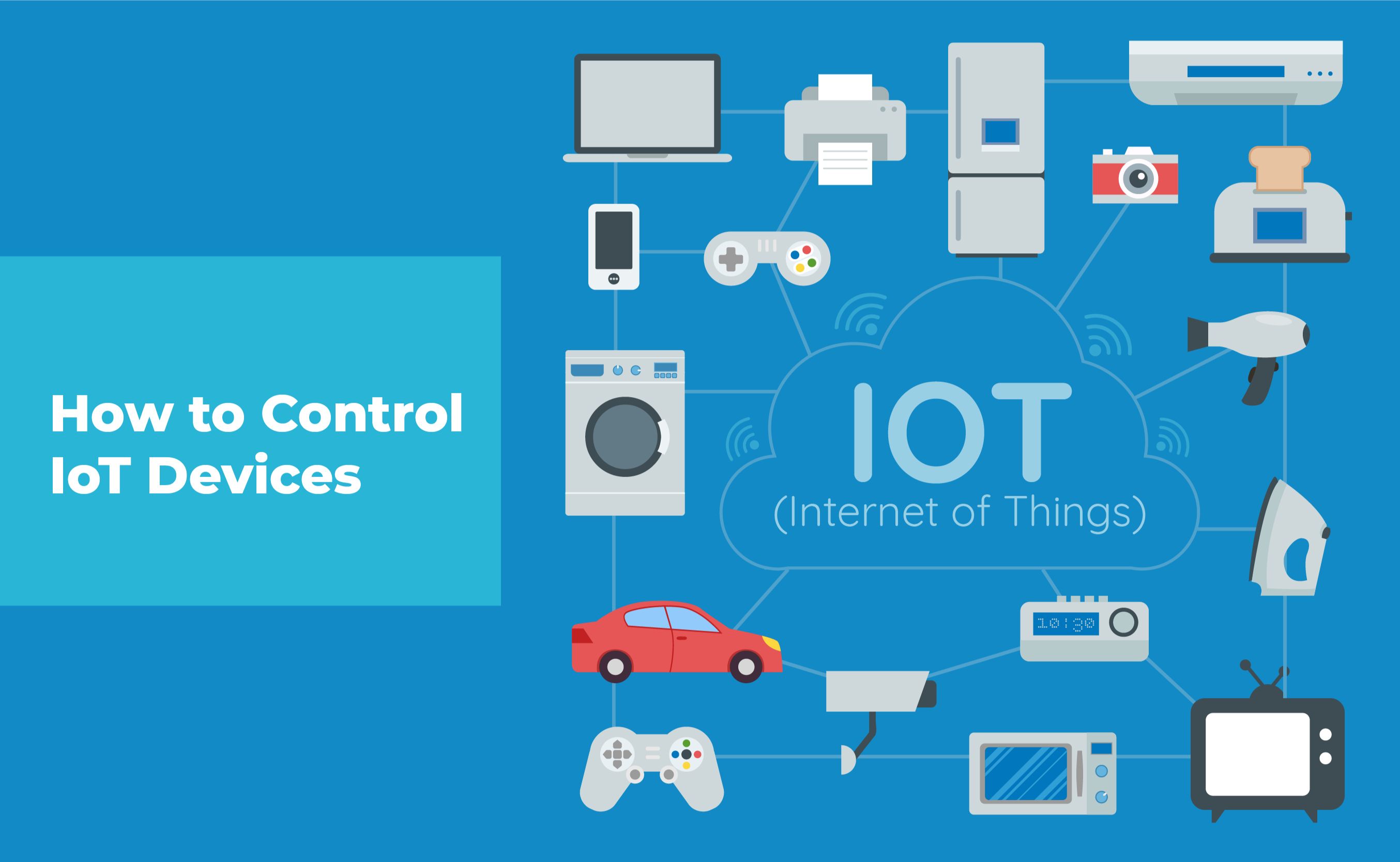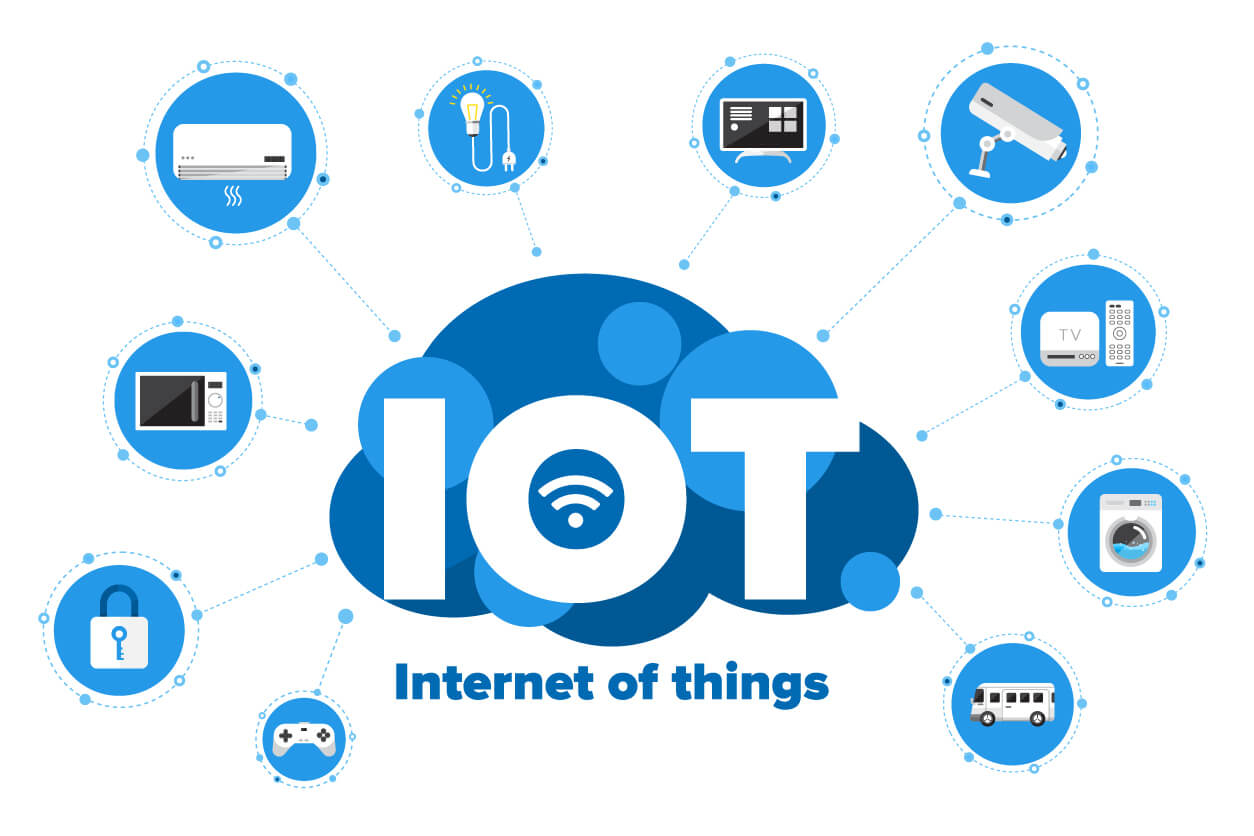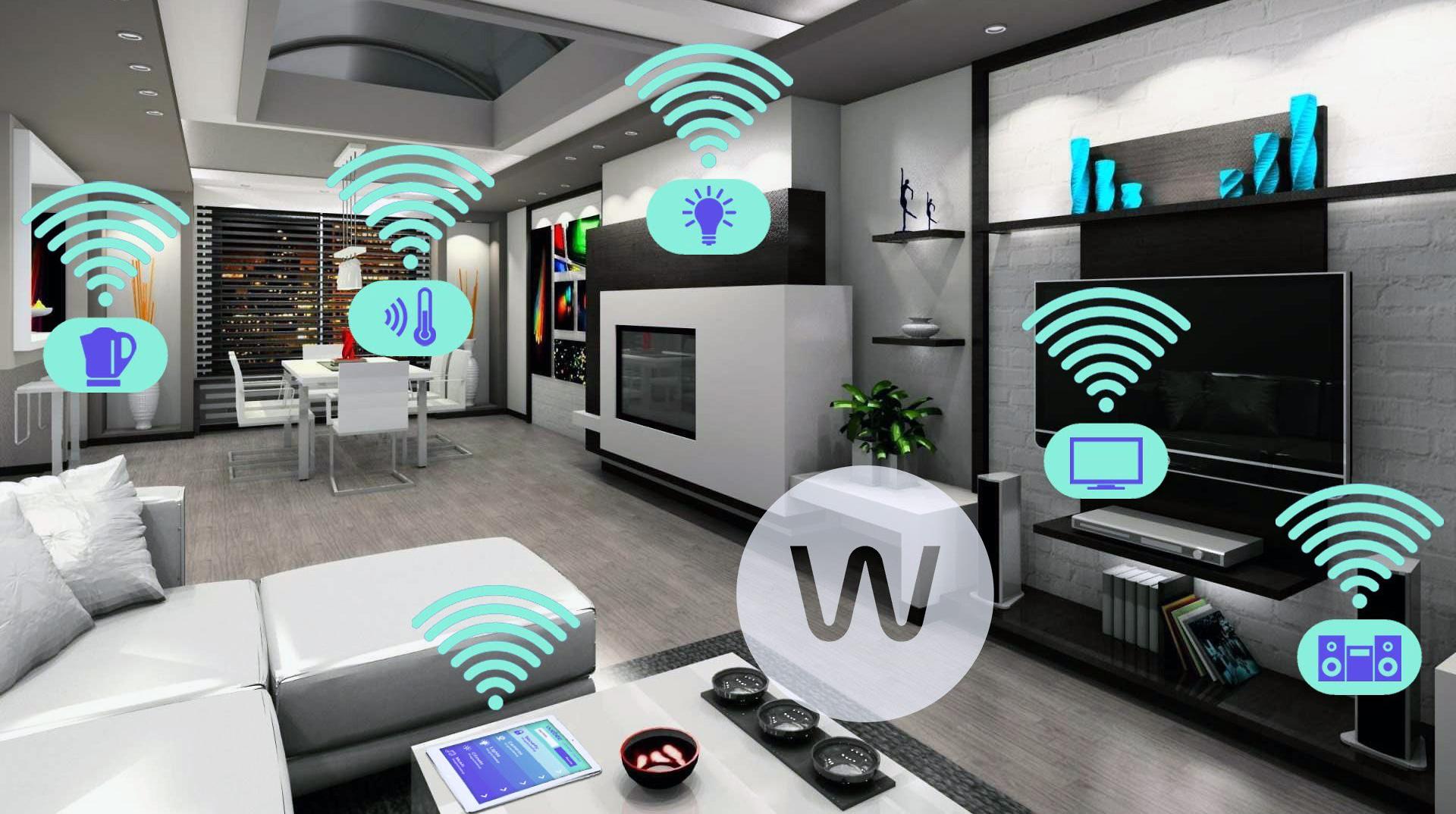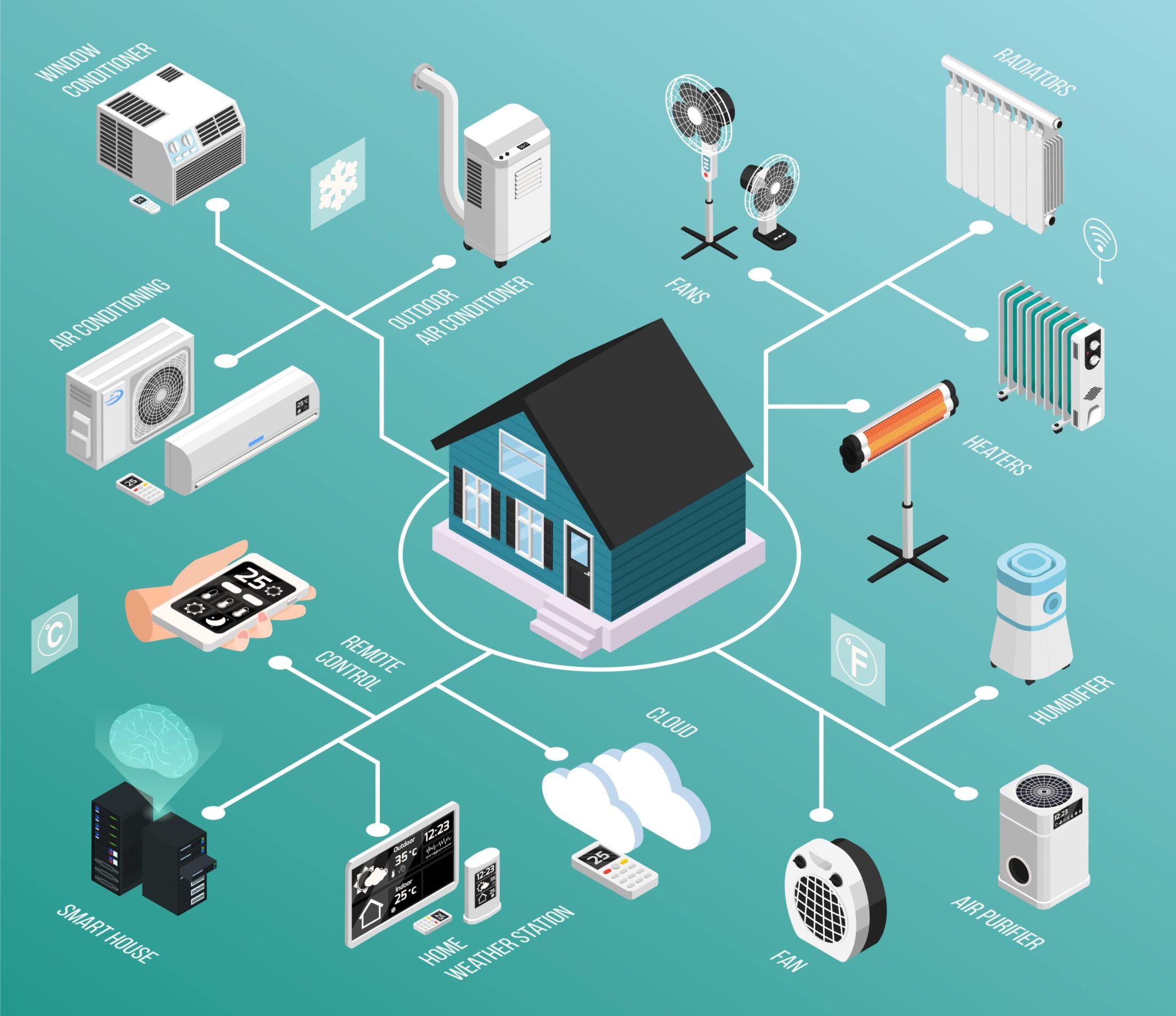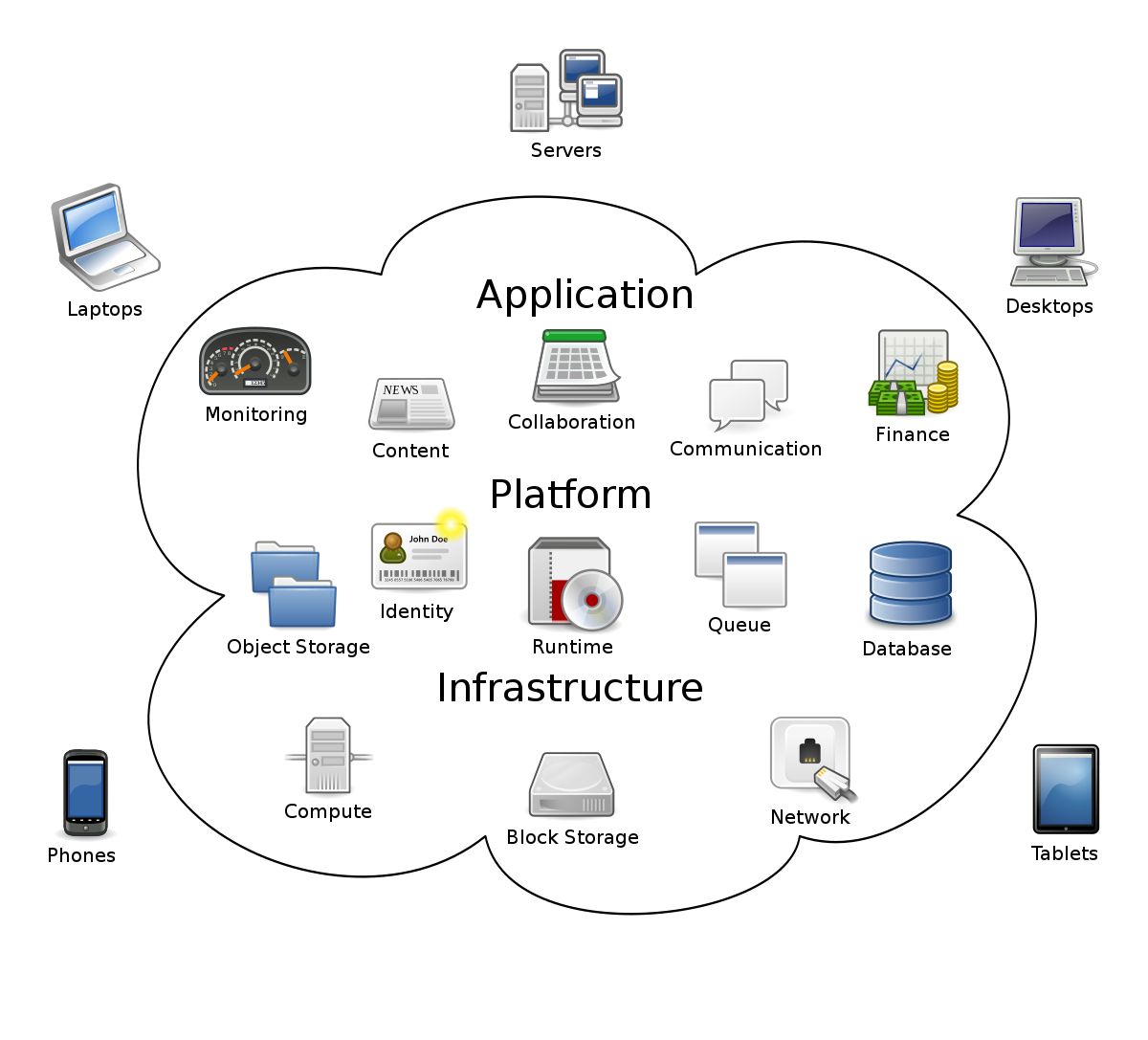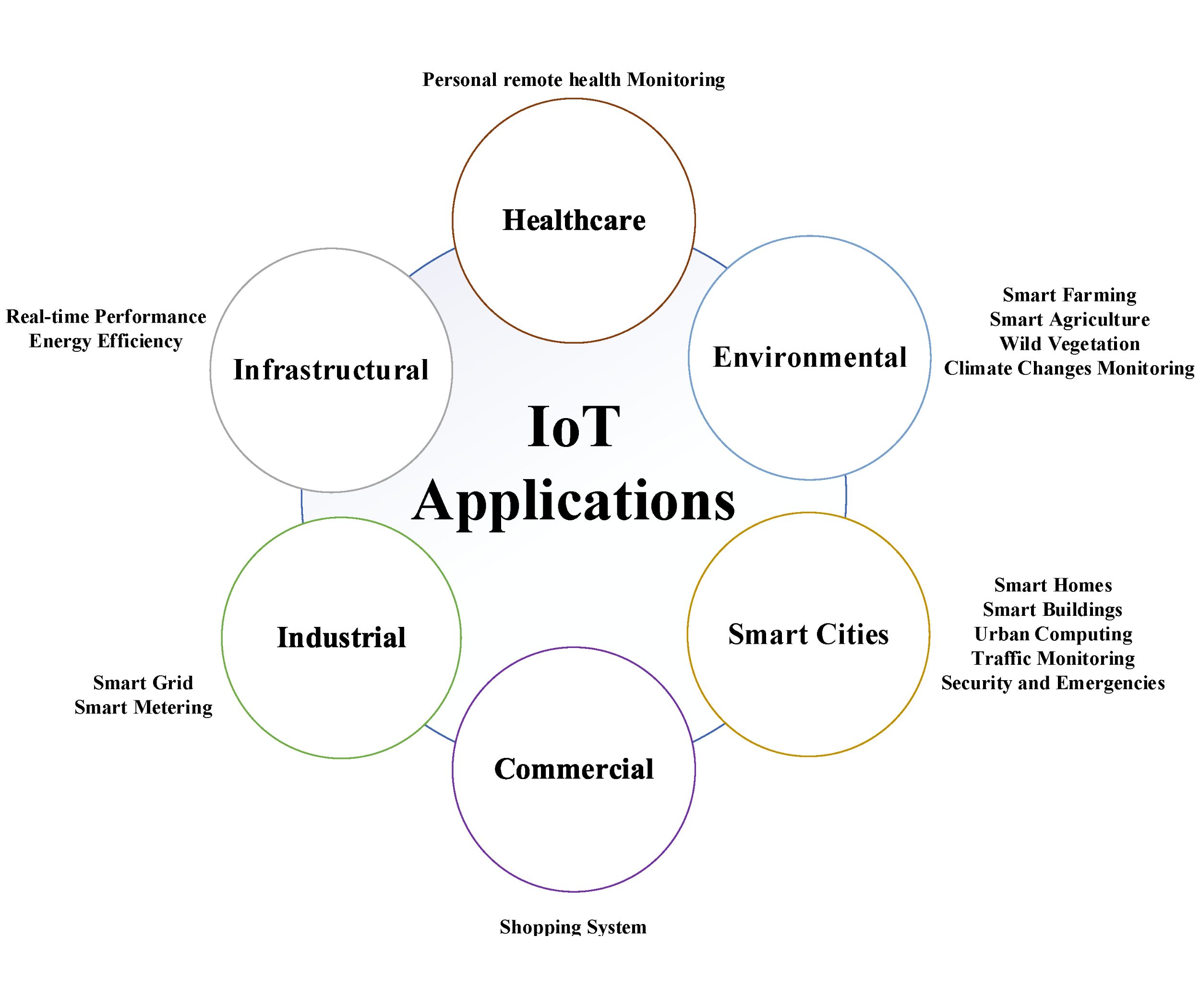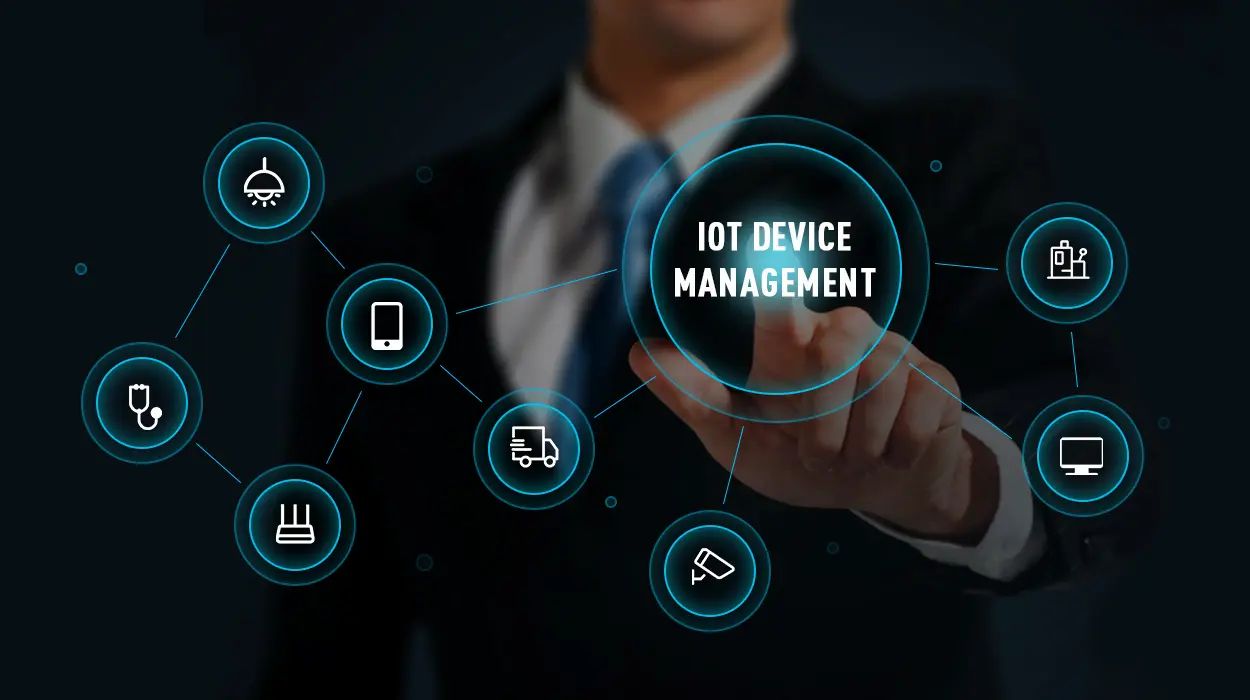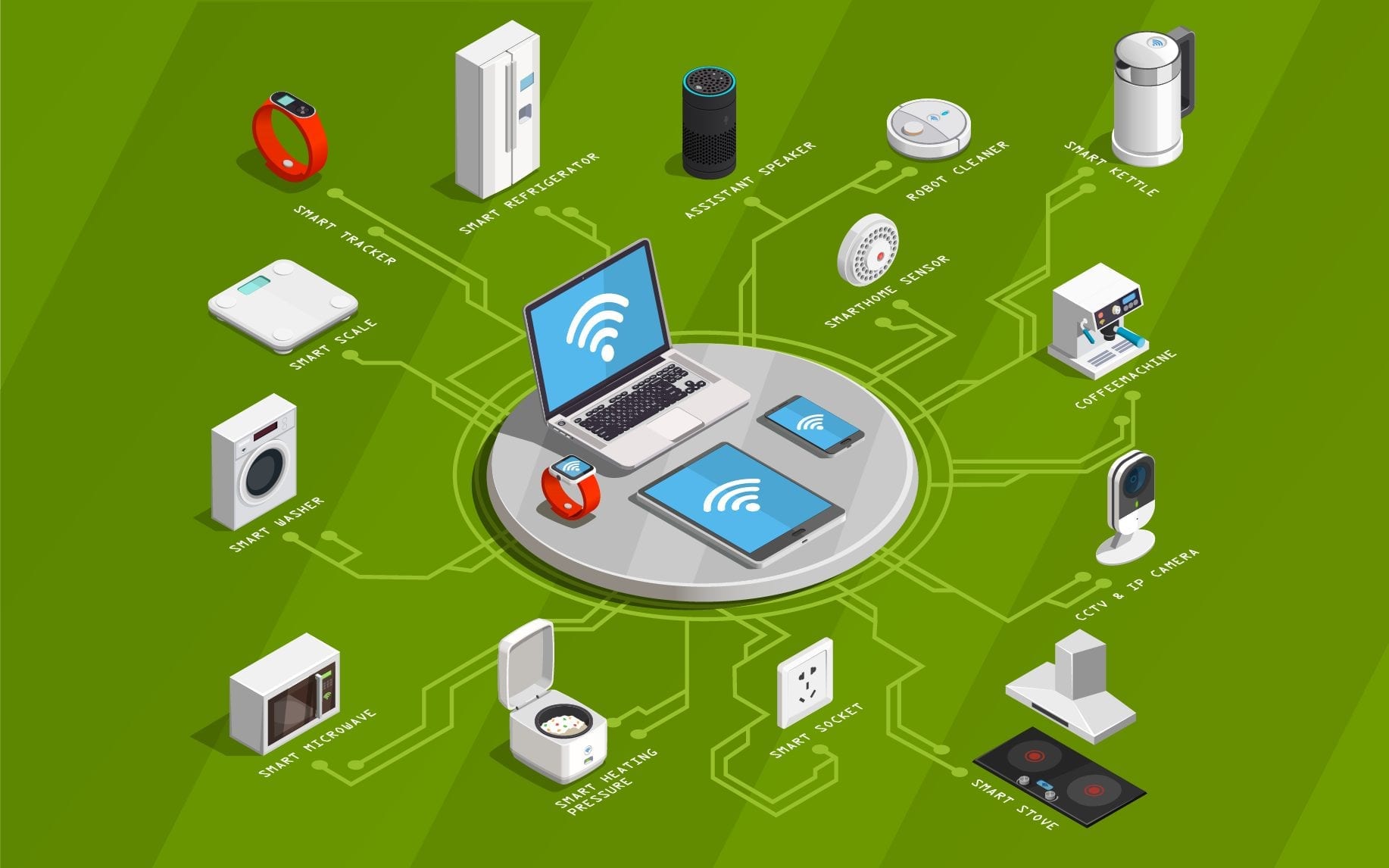Introduction
Welcome to the era of the Internet of Things (IoT), where everyday objects are interconnected, making our lives more convenient and efficient. From smart thermostats and door locks to voice-controlled virtual assistants, IoT-connected smart devices have become an integral part of our homes and offices. These devices are revolutionizing the way we interact with technology, allowing us to control and monitor various aspects of our environment with ease.
In this article, we will delve into the world of IoT-connected smart devices and explore the importance of controlling them. We will discuss the various ways in which you can take command of these devices, ensuring that they work seamlessly to enhance your daily routines. Whether you are a tech enthusiast or a complete novice, we will guide you through the process of managing and manipulating your IoT-connected devices.
Controlling these smart devices is not just a matter of convenience; it is essential for optimizing their functionality and maximizing their benefits. Imagine being able to adjust the temperature of your home while sitting on your couch, or turning off the lights in the living room without getting up. By having control over your IoT-connected smart devices, you can create a personalized, comfortable, and secure environment tailored to your needs.
So, how can you take control of your IoT-connected smart devices? We will explore various methods, including setting up a centralized control hub, using voice commands, creating custom automation routines, and even monitoring and controlling devices remotely. Additionally, we will discuss the importance of ensuring the security of your IoT-connected devices to protect your privacy and prevent unauthorized access.
Are you ready to delve into the exciting world of IoT and take control of your smart devices? Let’s explore the possibilities together!
Understanding IoT-connected smart devices
Before we discuss the ways to control IoT-connected smart devices, it’s important to have a clear understanding of what these devices are and how they function. Essentially, an IoT-connected smart device refers to any physical object or appliance that is embedded with technology, sensors, and connectivity features, allowing it to connect to the internet and exchange data with other devices or systems.
These devices come in various forms, ranging from smart speakers like Amazon Echo or Google Home, to smart thermostats, door locks, cameras, and even kitchen appliances. What sets them apart from traditional devices is their ability to connect to the internet, interact with other devices, and be controlled remotely.
IoT-connected smart devices rely on a combination of hardware, software, and connectivity protocols to function. They are equipped with sensors that collect data from the environment, such as temperature, humidity, motion, or light levels. This data is then transmitted to a central control hub or a cloud-based platform, where it can be analyzed and used to trigger specific actions or provide insights to the users.
These devices are typically controlled through companion mobile applications or web interfaces, which allow users to interact with them using their smartphones or computers. The apps provide a user-friendly interface to monitor and control various aspects of the devices, such as adjusting settings, scheduling tasks, or receiving notifications.
Furthermore, IoT-connected smart devices often utilize wireless technologies, such as Wi-Fi, Bluetooth, or Zigbee, to establish communication with other devices within a network. This allows for seamless integration and interoperability between different devices, creating a unified IoT ecosystem.
It’s worth mentioning that IoT-connected smart devices can also leverage artificial intelligence and machine learning algorithms to learn from user behavior and adapt their functionality accordingly. For example, a smart thermostat can learn from your temperature preferences and automatically adjust itself to create a comfortable environment.
Understanding the basics of IoT-connected smart devices is crucial for effectively controlling and harnessing the full potential of these devices. With this knowledge, let’s explore the different methods through which you can take command of your IoT-connected smart devices and make them work for you.
Importance of controlling IoT-connected devices
The ability to control IoT-connected devices offers numerous advantages and benefits that go beyond just convenience. Let’s explore the importance of having control over these devices and how it can enhance your daily life.
1. Convenience and Efficiency: Controlling your IoT-connected devices allows you to automate tasks and streamline your daily routines. Imagine being able to set your coffee maker to brew a fresh pot of coffee every morning before you wake up or having your lights automatically turn on as you enter a room. These conveniences save you time and effort, making your life more efficient.
2. Personalized Experience: With control over your IoT-connected devices, you can customize their settings to suit your preferences. Whether it’s adjusting the temperature in your home, changing the lighting ambiance, or playing your favorite music playlist, you have the power to create a personalized experience tailored to your needs and preferences.
3. Energy Efficiency: By having control over your smart devices, you can optimize their energy usage. For example, you can set your thermostat to adjust the temperature when you leave the house or integrate your lights with motion sensors to turn them off when a room is unoccupied. These energy-saving measures not only reduce your carbon footprint but also result in cost savings on your utility bills.
4. Security and Safety: Controlling IoT-connected devices allows you to prioritize security and safety. For instance, you can remotely lock your doors, monitor your home through security cameras, or receive notifications if any unusual activity is detected. Being able to monitor and control your devices gives you peace of mind, knowing that you have an extra layer of protection and control over your environment.
5. Integration and Interoperability: Controlling your IoT-connected devices enables seamless integration and interoperability between different devices within your smart home ecosystem. You can create custom automation routines where devices work together to perform a series of actions based on specific triggers or conditions. For example, when you say “Goodnight” to your voice-controlled virtual assistant, it can dim the lights, lock the doors, and set the alarm system.
6. Accessibility: IoT-connected devices offer enhanced accessibility for individuals with disabilities or mobility challenges. With centralized control options and voice commands, these devices make it easier for everyone to interact with and manage various aspects of their environment, enhancing independence and inclusivity.
Having control over your IoT-connected devices is not just a luxury; it’s a necessity in today’s interconnected world. It empowers you to create a more convenient, efficient, and secure living environment tailored to your preferences. In the next sections, we will explore the different methods through which you can take control of your IoT-connected smart devices and unlock their full potential.
Ways to Control IoT-Connected Smart Devices
Controlling your IoT-connected smart devices can be done through various methods, ranging from setting up a centralized control hub to utilizing voice commands and creating custom automation routines. Let’s explore these different ways to take command of your IoT-connected devices and make them work harmoniously for you.
1. Setting up a Centralized Control Hub:
One of the most effective ways to control your IoT-connected devices is by setting up a centralized control hub. This hub acts as a central point of control, allowing you to manage multiple devices from a single interface. Examples of popular control hubs include smart home platforms like Samsung SmartThings or Apple HomeKit. These platforms provide a unified dashboard where you can monitor and control all your devices, making it easy to adjust settings, view notifications, and create automation routines.
2. Using Voice Commands:
Thanks to the rise of voice assistants like Amazon Alexa or Google Assistant, controlling your IoT-connected devices with voice commands has become seamless and natural. By simply speaking a command, you can control lights, adjust thermostats, play music, and much more. The voice assistant acts as an intermediary, interpreting your commands and communicating them to the respective devices. Voice control provides a hands-free and convenient way to operate your smart devices, making it especially useful when your hands are occupied or you’re in another room.
3. Creating Custom Automation Routines:
Automation allows you to create custom routines and scenarios for your IoT-connected smart devices. Using the control hub or dedicated automation platforms like IFTTT (If This, Then That), you can create rules and triggers based on certain events or conditions. For example, you can automate the lights to turn on when you arrive home or set the thermostat to adjust automatically based on the weather forecast. This level of customization enhances your daily routines and reduces the need for manual intervention, bringing convenience to a whole new level.
4. Monitoring and Controlling Remotely:
Another way to control your IoT-connected devices is by accessing and managing them remotely. Most smart devices have companion mobile apps that allow you to monitor and control them from anywhere in the world as long as you have an internet connection. This remote access enables you to check the status of your devices, adjust settings, and receive notifications while you’re away from home. Whether you forgot to turn off the lights or want to check if the security cameras are working, remote control ensures that you have peace of mind and control even when you’re not physically present.
It’s important to note that while controlling your IoT-connected devices offers great convenience, it’s essential to prioritize security. Protecting your devices from unauthorized access is crucial to safeguard your privacy. Ensure that you use strong passwords, keep your software up to date, and consider using additional security measures like two-factor authentication or secure home network configurations.
By utilizing these different methods, you can take full control of your IoT-connected smart devices and integrate them seamlessly into your daily life. Whether it’s through centralized control hubs, voice commands, custom automation, or remote access, these methods provide flexibility, convenience, and personalized experiences with your smart devices.
Setting up a Centralized Control Hub
Setting up a centralized control hub is a powerful way to manage and control your IoT-connected smart devices from a single interface. This method simplifies the management of multiple devices, offers a unified experience, and enhances the overall efficiency of your smart home ecosystem. Let’s explore the steps involved in setting up a centralized control hub.
1. Choose a Suitable Control Hub:
The first step is to choose a control hub that aligns with your needs and preferences. There are multiple options available in the market, with some popular choices being Samsung SmartThings, Apple HomeKit, and Google Assistant. Research the features and compatibility of each platform to ensure it works with your existing devices or the ones you plan to purchase.
2. Install the Control Hub:
Once you have selected a control hub, follow the manufacturer’s instructions to set it up. This typically involves connecting the hub to your home network using an Ethernet cable or through Wi-Fi. Some hubs may require additional steps like creating an account or downloading a mobile app to complete the setup process.
3. Connect Your Smart Devices:
After successfully setting up the control hub, it’s time to connect your IoT-connected smart devices. Depending on the hub and devices, the process may vary slightly. Generally, you will need to open the control hub’s mobile app or web interface and follow the instructions to add each device. This usually involves putting the device in pairing mode and allowing the control hub to discover and connect with it.
4. Organize and Customize:
Once all your devices are connected, take some time to organize and customize their settings within the control hub’s interface. Group devices into rooms or zones to easily manage them together, and assign meaningful names to each device for clarity. Additionally, explore the customization options available, such as adjusting brightness levels for smart bulbs or creating scenes for specific occasions.
5. Control and Monitor Devices:
Once your devices are connected and organized, you can now control and monitor them through the control hub’s app or web interface. From the hub’s dashboard, you can access individual device controls, adjust settings, automate routines, and receive notifications. Whether it’s turning on lights, adjusting thermostat temperatures, or checking security camera feeds, you have the power to manage all your devices from one centralized location.
6. Explore Integration Possibilities:
Many control hubs offer integration with other third-party services and devices, expanding the possibilities for automation and control. Explore these integration options to enhance and streamline your smart home experience. For example, you may be able to integrate your control hub with your voice assistant to control devices using voice commands or connect it with a weather service to automate your thermostat based on climate conditions.
By setting up a centralized control hub, you gain convenient access to all your IoT-connected smart devices from a single interface. This eliminates the need to switch between individual device apps and simplifies the management and control of your smart home ecosystem. Take advantage of this method to streamline and enhance your smart home experience.
Using Voice Commands to Control IoT-Connected Smart Devices
Voice control has become increasingly popular as a convenient and hands-free method to control IoT-connected smart devices. The ability to simply speak commands and have your devices respond instantly adds a new level of ease and efficiency to managing your smart home. Let’s explore how you can use voice commands to control your IoT-connected smart devices.
1. Choose a Compatible Voice Assistant:
The first step is to choose a voice assistant that is compatible with your IoT-connected devices. Popular voice assistants include Amazon Alexa, Google Assistant, and Apple Siri. Ensure that your devices support the chosen voice assistant, as compatibility may vary depending on the brand and model.
2. Set Up the Voice Assistant:
Once you have chosen a compatible voice assistant, you will need to set it up. This generally involves downloading the respective mobile app and following the instructions to link the voice assistant to your devices. You may need to enable specific skills or integrations to establish the connection.
3. Discover and Pair Devices:
After setting up the voice assistant, you will need to discover and pair your IoT-connected devices. This process varies depending on the voice assistant and the devices you are connecting. In most cases, you can use the voice assistant app to initiate the device discovery process and follow the prompts to pair each device.
4. Learn the Voice Commands:
Each voice assistant has its own unique set of voice commands that you can use to control your IoT-connected smart devices. Spend some time learning these commands and familiarizing yourself with their syntax. Common commands may include turning devices on or off, adjusting volume or brightness levels, changing temperatures, and even executing custom routines or scenes.
5. Practice Natural Language Commands:
Modern voice assistants are becoming increasingly advanced and capable of understanding natural language commands. Instead of relying solely on predefined commands, you can try speaking to your voice assistant in a more conversational manner. For example, saying “Hey Google, turn off the lights in the living room” or “Alexa, set the thermostat to 72 degrees” can yield accurate results.
6. Create Custom Voice Routines:
Take advantage of the voice assistant’s capabilities to create custom voice routines. These routines allow you to combine multiple actions or commands into a single voice command. For instance, you can create a bedtime routine that turns off the lights, locks the doors, and adjusts the thermostat simply by saying a specific phrase.
7. Consider Multiple Voice Assistant Devices:
If you have multiple rooms or areas in your home, consider placing voice assistant devices in different locations. This ensures that you can control devices from anywhere in your home without needing to be in close proximity to a single voice assistant device. This setup enhances the accessibility and convenience of using voice commands.
Using voice commands to control your IoT-connected smart devices offers a hands-free and convenient way to interact with your devices. With the power of your voice, you can effortlessly perform various tasks and adjust settings without needing to physically interact with each device. Embrace this technology and enjoy the seamless control it brings to your smart home ecosystem.
Creating Custom Automation Routines
Creating custom automation routines for your IoT-connected smart devices allows you to streamline your daily routines and make your smart home work more efficiently. With automation, you can schedule tasks, trigger actions based on specific conditions, and have devices work together seamlessly. Let’s explore how you can create custom automation routines to enhance your smart home experience.
1. Identify Routine Scenarios:
The first step is to identify routine scenarios that can benefit from automation. Consider tasks or actions that you frequently perform or situations where automation can simplify your daily life. For example, you may want to create a morning routine that gradually turns on lights, warms up the coffee machine, and starts playing your favorite music as you wake up.
2. Choose an Automation Platform:
Select an automation platform that is compatible with your IoT-connected devices and suits your needs. Some popular platforms include IFTTT (If This, Then That), SmartThings, and Home Assistant. These platforms offer user-friendly interfaces and allow you to create custom automation routines using a combination of triggers and actions.
3. Define Triggers:
Triggers are events that initiate the automation routine. These can be time-based triggers, sensor-based triggers, or triggers based on the status of other devices. For example, a time-based trigger could be “Every day at 7:30 AM,” while a sensor-based trigger could be “When motion is detected in the hallway.”
4. Set Actions:
Actions are the tasks or commands that are executed when a trigger event occurs. Depending on your devices and automation platform, you can choose a wide range of actions. These may include turning on or off lights, adjusting thermostat settings, locking or unlocking doors, playing media, or sending notifications to your phone.
5. Customize the Automation Routine:
Customize the automation routine by specifying the exact actions you want to take place. For example, you can set the lights to gradually brighten over a few minutes in the morning routine or specify the exact temperature you want the thermostat to be set to. The more tailored the routine is to your preferences, the more seamless and personalized your smart home experience will be.
6. Test and Refine:
After creating the automation routine, it’s important to test and refine it to ensure everything works as expected. Make adjustments as needed and fine-tune the routine until it aligns perfectly with your requirements. Regularly reviewing and optimizing your automation routines will help you get the most out of your smart home ecosystem.
7. Explore Advanced Automation Features:
Automation platforms often offer advanced features that can further enhance your routines. These may include conditional statements, such as “if/else” logic, integration with external services like weather APIs, or utilizing variables to create dynamic routines. Take time to explore these features and integrate them into your automation routines for even greater flexibility and customization.
Creating custom automation routines empowers you to have your smart devices work together to simplify your daily routines and enhance your overall smart home experience. By automating repetitive tasks and orchestrating a synchronized environment, you can enjoy a seamless and efficient living space tailored to your preferences.
Monitoring and Controlling IoT-Connected Devices Remotely
The ability to monitor and control your IoT-connected devices remotely brings convenience, flexibility, and peace of mind. Whether you’re away from home or in another room, this functionality allows you to stay connected and maintain control over your smart devices. Let’s explore how you can effectively monitor and control your IoT-connected devices remotely.
1. Ensure Remote Access Capability:
Before being able to monitor and control your devices remotely, you need to ensure that they have remote access capability. Most modern IoT-connected devices have companion mobile apps or web portals that allow you to access and control them remotely. Ensure that you have downloaded and set up the respective apps for your specific devices.
2. Enable Remote Access on the Apps:
Within the companion apps for your IoT-connected devices, there is usually a setting to enable remote access. This is typically done by signing in to your account associated with the devices and verifying your identity. Once enabled, you will have the ability to monitor and control your devices from anywhere with an internet connection.
3. Check Device Status and Activity:
With remote access, you can check the status and activity of your IoT-connected devices in real-time. You can view information such as the current temperature settings on your thermostat, whether your smart lights are on or off, and the current security status of your smart locks or cameras. This information allows you to stay informed and make adjustments as needed, even when you’re not on-site.
4. Adjust Device Settings Remotely:
Remote access also allows you to adjust the settings of your IoT-connected devices remotely. Whether you want to change the temperature in your home, adjust the brightness of your lights, or alter the security modes of your cameras, you can do so through the companion apps. This means you can ensure your home is comfortable, secure, and tailored to your preferences, no matter where you are.
5. Control Devices with Schedules and Timers:
Take advantage of remote access to set up schedules and timers for your IoT-connected devices. This allows you to automate tasks and create routines based on specific times and days. For example, you can schedule your lights to turn on and off at specific times or set your sprinkler system to water your garden automatically at designated intervals.
6. Receive Notifications and Alerts:
Remote access enables you to receive notifications and alerts from your IoT-connected devices. Whether it’s a security camera alert for unusual activity, an alert for a door left unlocked, or a reminder to change the water filter in your smart refrigerator, these notifications keep you informed and help you maintain the optimal functioning of your devices.
7. Ensure a Secure Remote Connection:
When accessing and controlling your IoT-connected devices remotely, it’s important to ensure a secure connection. Avoid using public Wi-Fi networks and instead opt for secure networks or set up a VPN (Virtual Private Network) to establish a secure connection. This prevents unauthorized access and protects your privacy.
By leveraging the power of remote access, you can have full control and visibility over your IoT-connected devices, even when you’re not physically present. This allows you to stay connected, make adjustments, and ensure the optimal functioning of your smart home ecosystem from anywhere in the world.
Ensuring the Security of Your IoT-Connected Smart Devices
When it comes to IoT-connected smart devices, prioritizing security is crucial to protect your privacy and prevent unauthorized access. These devices are connected to the internet, which means they are potentially vulnerable to cyber threats. Implementing proper security measures is essential to ensure the safety and integrity of your smart home ecosystem. Let’s explore some key steps to ensure the security of your IoT-connected smart devices.
1. Update Firmware and Software:
Regularly updating the firmware and software of your IoT-connected devices is critical. Manufacturers release updates to address security vulnerabilities and enhance device performance. Keep an eye on notifications from manufacturers or check the device’s settings menu to see if any updates are available. Stay vigilant and promptly install the latest updates to maintain a secure environment.
2. Use Strong and Unique Passwords:
Creating strong and unique passwords for your IoT-connected devices is a fundamental yet often overlooked security measure. Avoid using common passwords or reusing passwords across multiple devices. Instead, use a combination of uppercase and lowercase letters, numbers, and special characters. Consider using a password manager to store and generate strong, unique passwords for each device.
3. Enable Two-Factor Authentication (2FA):
Two-factor authentication adds an extra layer of security to your IoT-connected devices. With 2FA, a secondary authentication method, such as a verification code sent to your smartphone, is required in addition to the password. Enable 2FA whenever possible to prevent unauthorized access to your devices, even if someone gets hold of your password.
4. Secure Your Home Network:
Securing your home network is essential when it comes to protecting your IoT-connected smart devices. Change the default password on your Wi-Fi router, ensure it uses WPA2 or WPA3 encryption, and regularly update the router’s firmware. Consider setting up a separate guest network for visitors to keep your primary network isolated and secure.
5. Disable Unnecessary Features:
Review the features of your IoT-connected devices and disable any unnecessary ones. Some features may introduce additional security risks, such as remote access capabilities that you don’t use or don’t need. By disabling such features, you reduce potential entry points for attackers and minimize the risk of unauthorized access.
6. Implement Network Segmentation:
Consider implementing network segmentation to isolate your IoT-connected devices from other devices on your network. This provides an additional layer of protection by preventing potential compromise of one device from affecting the entire network. Network segmentation can be achieved through technologies like VLAN (Virtual Local Area Networks) or by using separate physical network equipment.
7. Regularly Monitor and Audit Devices:
Regularly monitor and audit your IoT-connected devices to ensure they are functioning as expected. Check for any suspicious activity or unusual behavior, such as unexpected device responses or unknown devices connected to your network. If you notice anything suspicious, investigate further and take appropriate action, such as updating security settings or contacting manufacturer support.
By implementing these security measures, you can enhance the protection of your IoT-connected smart devices. Remember that maintaining the security of your smart home ecosystem is an ongoing process. Stay informed about emerging security threats and best practices, and always prioritize security when making decisions about your IoT-connected devices.
Conclusion
The world of IoT-connected smart devices offers immense potential to enhance our daily lives, providing convenience, efficiency, and personalized experiences. With the ability to control and manage these devices, we can create a seamless and interconnected environment that adapts to our needs and preferences.
In this article, we explored various ways to take command of our IoT-connected smart devices. We discussed the importance of controlling these devices, not just for convenience but also for optimizing functionality, personalizing experiences, and prioritizing security.
We learned about setting up a centralized control hub, which allows us to manage multiple devices from a single interface. This hub acts as a central point of control, streamlining the management and control of our smart home ecosystem.
We also explored the power of using voice commands to control our IoT-connected devices. By leveraging voice assistants, we can operate our devices in a hands-free manner, enhancing accessibility and convenience.
Creating custom automation routines enables us to automate tasks, schedule actions, and synchronize the behavior of our devices. This streamlines our daily routines and reduces the need for manual intervention.
The ability to monitor and control our IoT-connected devices remotely empowers us to stay connected and in control, even when we’re away from home. This functionality ensures that our devices are functioning optimally, provides peace of mind, and enhances the overall smart home experience.
Lastly, we discussed the importance of ensuring the security of our IoT-connected smart devices. Implementing proper security measures, such as updating firmware, using strong passwords, enabling two-factor authentication, and securing the home network, protects our privacy and prevents unauthorized access.
By embracing these methods and prioritizing security, we can take full advantage of the potential offered by IoT-connected smart devices. Whether it’s creating a comfortable living environment, automating tasks, or maintaining a secure home, controlling our IoT-connected devices empowers us to shape our surroundings to suit our preferences and enhance our daily routines.
So, are you ready to take control and embark on your own journey in the world of IoT-connected smart devices? Unleash the potential of your devices and experience the convenience and efficiency they bring to your life!







